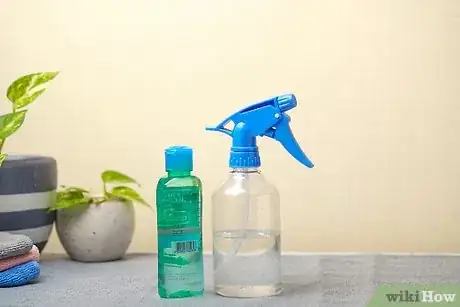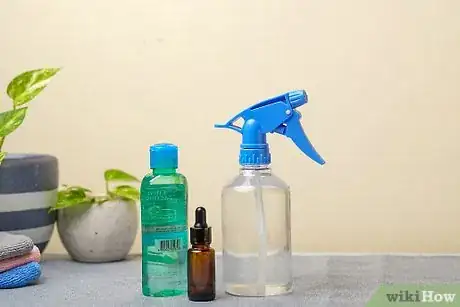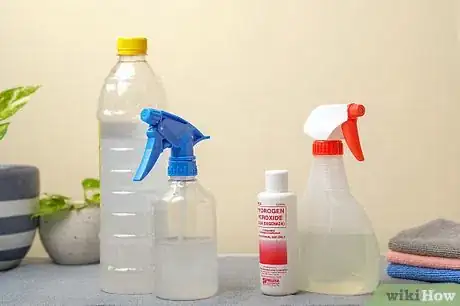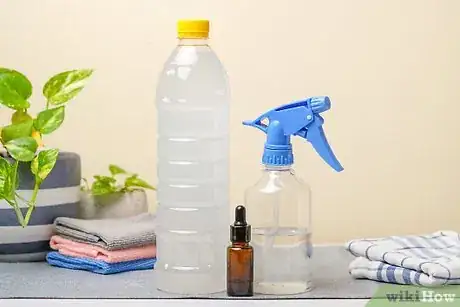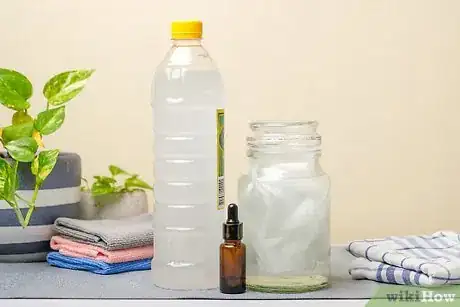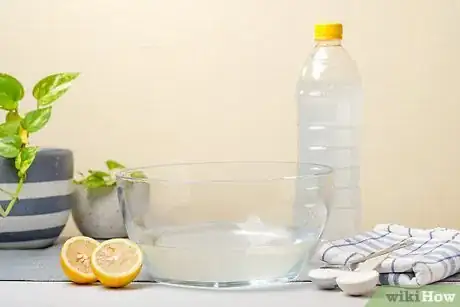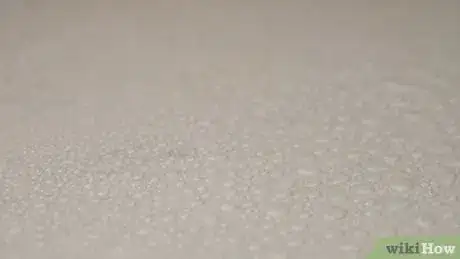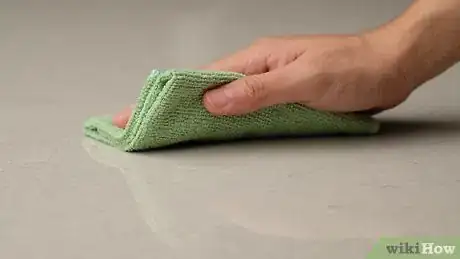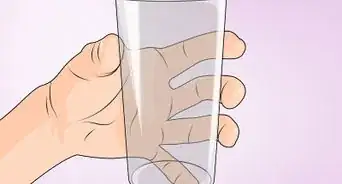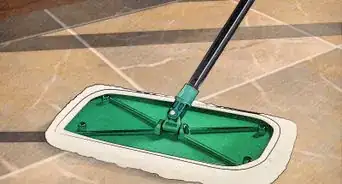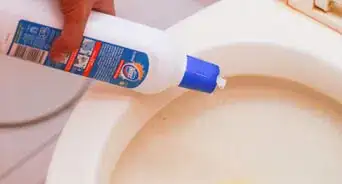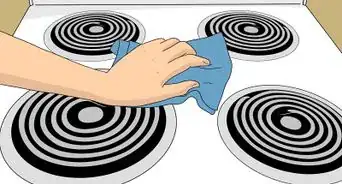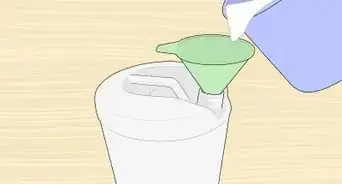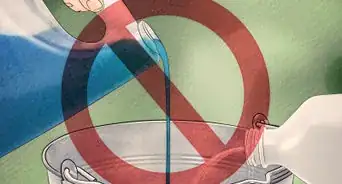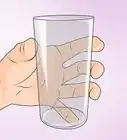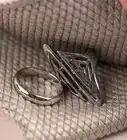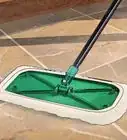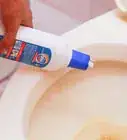This article was medically reviewed by Susan Stocker and by wikiHow staff writer, Hunter Rising. Susan Stocker runs and owns Susan’s Green Cleaning, the #1 Green Cleaning Company in Seattle. She is well known in the region for outstanding customer service protocols — winning the 2017 Better Business Torch Award for Ethics & Integrity —and her energetic support of green cleaning practices.
wikiHow marks an article as reader-approved once it receives enough positive feedback. This article has 14 testimonials from our readers, earning it our reader-approved status.
This article has been viewed 805,543 times.
Many commercially made cleaning products are created with hazardous chemicals that can cause respiratory problems, skin irritations and can even pollute the air in your home. Instead of using these products, you can easily make a natural disinfectant at home using ingredients like vinegar, rubbing alcohol and essential oils, which help to reduce your exposure to chemicals while keeping your house as clean as store-bought disinfectants.
Note: Vinegar is not effective against the COVID-19 virus. Solutions with less than 60% alcohol are also not effective against the novel coronavirus.[1] Use caution when making your own disinfectants, since it is difficult to ensure effectiveness.
Steps
Making Rubbing Alcohol and Hydrogen Peroxide-Based Disinfectants
-
1Use basic undiluted rubbing alcohol. Choose a product that has at least 70% alcohol content, or else it won’t effectively kill bacteria or viruses. Put the rubbing alcohol in a spray bottle so you easily apply it to any surface.[2]
- This cleaning solution should be effective against coronavirus.
- Do not dilute your rubbing alcohol with water since it is easy to make an error and end up with a percentage that would be ineffective!
-
2Make a herbal rubbing alcohol spray. Pour 10-30 drops of thyme or another essential oil of your choice into an 8 fluid ounces (240 ml) glass spray bottle. Fill the rest of the spray bottle with rubbing alcohol that has at least 60% alcohol content. Shake the bottle to mix the ingredients and store it in a cupboard or pantry.[3]
- This cleaner is also effective to use for the novel coronavirus.
Advertisement -
3Use a vinegar and hydrogen peroxide combination. Vinegar and hydrogen peroxide work well to disinfect, but they should not be combined in a single container as they make a peracetic acid which can be hazardous. Instead, add undiluted white vinegar to one spray bottle and 3% hydrogen peroxide to another.[4]
- You cannot use this cleaner to combat against coronavirus.
- To use, clean a surface, then spray it with one mixture, let it sit for about 5 minutes, then wipe with a clean cloth and spray with the other. Let it sit for 5 minutes and then wipe with another clean cloth.
- It does not matter if you start with the vinegar or with the rubbing alcohol.
Making Vinegar-Based Disinfectants
-
1Make a basic vinegar-based spray. In a standard-sized glass spray bottle, add 1 part water, 1 part vinegar and 5-15 drops of 100% essential oil or lemon oil. You can use whichever essential oil whose scent you prefer, or customize the scent according to what room in your home you are cleaning.
- Vinegar-based disinfectants will not work to disinfect surfaces from viruses, including the novel coronavirus.
- Lemon essential oil is traditionally used to clean the kitchen, as the lemon scent can neutralize strong kitchen smells.
- Tea tree and eucalyptus oil are great for neutralizing bathroom odors.
- You may prefer to use milder smelling essential oils such as chamomile or vanilla in the parts of your houses where you are not worried about eliminating odors.
- Essential oils can sometimes react with plastic, which is why you should use a glass spray bottle.
-
2Make disinfectant wipes. If you want to make disinfectant wipes rather than a spray, follow the same recipe as if making a basic vinegar spray, but instead of putting the ingredients in a spray bottle, put them instead in a large glass jar and swirl them to combine. Cut 15-20 pieces of cloth into 10 in (25 cm) squares and place them inside the jar of cleaner.[5]
- These wipes do not disinfect surfaces contaminated with coronavirus.
- Press down the cloths inside the glass jar so that they are submerged and can soak up the cleaner. Then place the lid on the top of the jar and store the wipes in a cupboard or pantry.
- To use the wipes, take out a wipe and wring it out to remove excess cleaner, then use it to wipe surfaces clean.
-
3Make a vinegar and baking soda spray. In a clean bowl or bucket, add 4 cups (950 ml) of hot water, 1⁄4 cup (59 ml) of white vinegar, and 2 tablespoons (28.8 g) of baking soda. Mix until the baking soda dissolves, then cut a lemon in half and squeeze both halves into the solution. Drop both rinds of the lemon into the mixture and wait for it to cool.[6]
- Vinegar and baking soda are not effective against COVID-19.
- Once cooled, add 4 drops of lemon essential oil or the essential oil of your choice. Strain the mixture through a fine sieve to remove any lemon pulp, seeds or rind, then transfer the mixture into a spray bottle.
Using the Disinfectant Spray
-
1Clean the surface. Disinfecting does not clean the surface or remove dirt or any other buildup, so it’s important to thoroughly clean the surface before disinfecting. Clean with a natural or organic cleaner if you are looking to avoid harsh chemicals.[7]
-
2Shake the spray. Shake the spray thoroughly to make sure that all the ingredients of the spray are mixed and that the spray will be effective.
-
3Spray the surface thoroughly with disinfectant spray. Hold the spray bottle of natural disinfectant an arm’s length from the surface you need to disinfect and spray thoroughly. Spray all the surfaces you are disinfecting if you are disinfecting multiple surfaces.[8]
-
4Let the spray sit for 10 minutes. Wait for about 10 minutes to let the disinfectant sit and more effectively attach to and eliminate germs.[9]
-
5Wipe with a microfiber cloth. After 10 minutes, wipe the disinfected surface with a microfiber cloth. If you’ve cleaned multiple surfaces in a kitchen or bathroom, use a separate cloth for each surface to avoid contamination.[10]
Expert Q&A
Did you know you can get expert answers for this article?
Unlock expert answers by supporting wikiHow
-
QuestionWhat's the best non-toxic, natural disinfectant?
 Chris WillattChris Willatt is the owner and founder of Alpine Maids, a cleaning agency in Denver, Colorado started in 2015. Alpine Maids has received Angie's List Super Service Award for three years in a row since 2016 and has been awarded Colorado's "Top Rated Local House Cleaning" Award in 2018.
Chris WillattChris Willatt is the owner and founder of Alpine Maids, a cleaning agency in Denver, Colorado started in 2015. Alpine Maids has received Angie's List Super Service Award for three years in a row since 2016 and has been awarded Colorado's "Top Rated Local House Cleaning" Award in 2018.
House Cleaning Professional
-
QuestionHow do you use homemade disinfectant?
 Chris WillattChris Willatt is the owner and founder of Alpine Maids, a cleaning agency in Denver, Colorado started in 2015. Alpine Maids has received Angie's List Super Service Award for three years in a row since 2016 and has been awarded Colorado's "Top Rated Local House Cleaning" Award in 2018.
Chris WillattChris Willatt is the owner and founder of Alpine Maids, a cleaning agency in Denver, Colorado started in 2015. Alpine Maids has received Angie's List Super Service Award for three years in a row since 2016 and has been awarded Colorado's "Top Rated Local House Cleaning" Award in 2018.
House Cleaning Professional
-
QuestionHow do you use natural disinfectant as a wipe?
 Jonathan TavarezJonathan Tavarez is the Founder of Pro Housekeepers, a premium cleaning service headquartered in Tampa, Florida catering to residential and commercial clients across the United States. Since 2015, Pro Housekeepers uses rigorous training methodologies to ensure high quality cleaning standards. Jonathan has over five years of professional cleaning experience and has over two years of experience as the Communications Director for the United Nations Association Tampa Bay. Jonathan earned a BS in Management and Marketing from the University of South Florida in 2012.
Jonathan TavarezJonathan Tavarez is the Founder of Pro Housekeepers, a premium cleaning service headquartered in Tampa, Florida catering to residential and commercial clients across the United States. Since 2015, Pro Housekeepers uses rigorous training methodologies to ensure high quality cleaning standards. Jonathan has over five years of professional cleaning experience and has over two years of experience as the Communications Director for the United Nations Association Tampa Bay. Jonathan earned a BS in Management and Marketing from the University of South Florida in 2012.
Property Hygiene Enabler
Things You’ll Need
- Essential oil(s) of your choice
- Microfiber cloth
- Cotton cloths
- White vinegar
- Baking soda
- Rubbing alcohol
- 3% hydrogen peroxide
- Glass spray bottle
References
- ↑ https://www.cdc.gov/coronavirus/2019-ncov/prepare/disinfecting-your-home.html
- ↑ https://www.cdc.gov/coronavirus/2019-ncov/prepare/disinfecting-your-home.html
- ↑ https://www.kitchenstewardship.com/natural-alternatives-bleach/
- ↑ http://cleaningbusinesstoday.com/blog/hydrogen-peroxide-vinegar-a-disinfecting-duo
- ↑ https://www.diynatural.com/homemade-wipes/
- ↑ https://theseamanmom.com/natural-disinfectant-for-home/
- ↑ https://www.cleanmama.net/2014/04/lavender-lemon-bathroom-disinfecting-spray.html
- ↑ https://www.cleanmama.net/2014/04/lavender-lemon-bathroom-disinfecting-spray.html
- ↑ https://www.cleanmama.net/2014/04/lavender-lemon-bathroom-disinfecting-spray.html
About This Article
To make your own natural disinfectant, try using hydrogen peroxide. Just pour 3% hydrogen peroxide into a spray bottle and spray it onto surfaces you want to disinfect. Let it sit for at least 1 minute before wiping it up with a clean cloth or paper towel. You can also use 70% rubbing alcohol as a disinfectant. Spray surfaces with the undiluted rubbing alcohol and let it sit for at least 30 seconds. The Centers for Disease Control and Prevention recommends using ⅓ cup (80 mL) of bleach mixed with 1 gallon (3.75 L) of water to disinfect surfaces. Apply the diluted bleach to household surfaces and let it sit for 10 minutes. Never mix bleach with ammonia while you’re disinfecting your home. Avoid using vinegar or tea tree oil as a natural disinfectant since they may not be effective against ceratin viruses.
